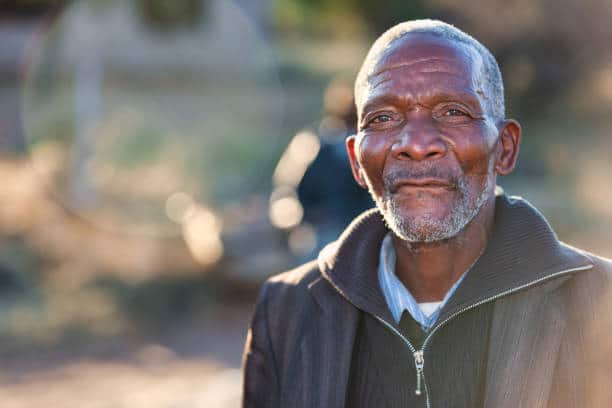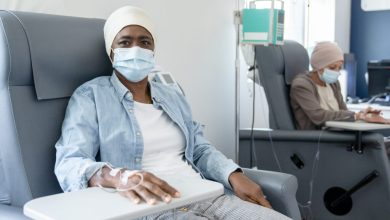5 Obstacles Seniors Face in Rural Population


For all of its beauty, living in a rural community has its hardships – hardships those living there for decades know well. Lack of vital resources like medical care and adequate transportation cause older rural community dwellers to only survive – not thrive. But why? And what can be done to help?
1. Lack of public transportation.
Rural areas don’t have access to public transportation or rideshare business like urban dwellers do. Black seniors must then rely on neighbors, relatives, or other limited transportation options to get around.
Seniors who can drive themselves face vehicle repossession due to reduced finances or aging into a visual impairment and losing their driver’s license.
RELATED: 5 Things to Consider in a Senior Living Facility
2. Living in poverty.
Financial insecurity for everyone hits differently for some, and seniors are one of the hardest hit. Poverty rates of rural seniors are higher than urban seniors, with 15 percent and 11 percent, respectively.
High poverty rates due to reduced finances, low wages, and fixed incomes exacerbate the affordability of food and housing. While some seniors are fortunate enough to live in income-restricted senior housing or live with multiple working adults that lighten the financial load, many must fend for themselves, scraping by week to week.
Income-restricted seniors usually delay or forgo preventative medical care altogether, because paying for adequate preventative medical care is nearly out of the question when they can barely feed themselves or keep the lights on.
3. They live in a remote location.
Many rural communities are in food deserts. While a decent grocery store is miles away from their homes, convenience stores and fast food restaurants are local and abundant. This location mismatch makes it easier for seniors to eat cheap but poorly, and nurse unhealthy habits like smoking and drinking overindulgence.
Rural communities also tend to have fewer if any medical facilities. Many times there is only one physician in town, and no hospital for miles.
Rural communities with hospitals may lack the state-of-the-art technologies of urban hospitals, setting them behind for the latest medical treatments. Rural hospitals are also at higher risk for closure, due to lack of patients and funds to keep them afloat.
Seniors living in rural communities not only live farther from grocers and medical facilities, they also live farther from each other. Isolation from friends, family, and support facilities has a negative impact on mental and physical health, including loneliness and neglect.
4. Distrust of medical caregivers and facilities.
Henrietta Lacks. The Syphilis study at Tuskegee. The “Mississippi appendectomy” of civil rights activist Fannie Lou Hamer. These are just a few big reasons why some seniors in rural communities balk at medical treatment from any physician.
Transgenerational trauma – caused by white physicians historically medically mistreating them or someone they know as patients. The recent story of world-renowned tennis player Serena Williams and her near-death experience from pulmonary embolism because her treatment team refused to listen to her likely reinforces their belief that physicians are only out to hurt, not help them.
The rollout of the COVID-19 vaccine in 2020 showed this mistrust in real time. Though tested and shown to be over 90 percent effective, many black seniors chose not to get the vaccine, citing medical mistreatment of black people in the past.
5. Lack of accurate data to meet their needs.
Rural communities – especially poor Black ones – are largely forgotten about when gathering data.
A lack of Black participants and incompatible measurement criteria can skew data toward white participants, leaving the former out of important community development decisions. Both contribute to a lack of study participation and faulty data.
Without accurate quantifiable statistics, funding for these communities doesn’t match the needs of its residents, if they receive any at all.
Black seniors can thrive in rural communities
What solutions are there to help black seniors prosper in rural areas instead of languishing in them?
Stand-alone medical facilities.
Free-standing emergency departments and medical pavilions ease the burden of transportation and location issues by bringing medical care to the rural community. While some house a minimum amount of inpatient beds, these facilities largely offer outpatient services like same-day surgery and other minor care procedures.
They can also house physician’s offices with multiple medical specialties, so making the long trek to the nearest town for healthcare is no longer necessary.
Rebuilding community trust.
Trust between a patient and doctor is necessary if medical care is expected to work. Fortunately, that trust for the Black senior community is not irretrievably broken. Physicians must go the extra mile to express to black seniors that they can trust them and their medical plans for them.
Understanding Black transgenerational trauma and identifying their own biases is a start to bridging the gap of mistrust between Black seniors and physicians.
Promoting community engagement.
Many rural communities are poor but tight-knit, and will pull together to weather hardships. Reinforcing community integration with social infrastructure can promote support for Black seniors who need transportation to grocery stores or medical facilities. Creating social spaces where people talk and connect can improve a rural communities health as a whole, by recognizing and meeting the communities needs.
Black seniors living in rural communities don’t have to just live day to day, and they don’t have to suffer alone. Recognizing their obstacles and creating solutions to overcome them is the best way for Black seniors to thrive in their rural communities and live out their golden years without stress. After all, if anyone deserves to be livin’ their life like it’s golden, it’s our Black elders.




